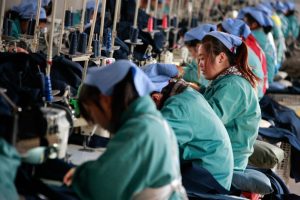best agriculture stocks: The Very Best Stocks For The Agriculture Bull Market


However, revenue declined in recent quarters as the economy has reopened, although comparisons should get easier over the rest of 2022. After several acquisitions throughout the 1990s and early 2000s, Titian International grew its global presence, and the company’s success is reflected by its stock price. Another company focused on manufacturing agricultural auxiliaries is Caterpillar, Inc, an American firm that develops industrial technology and sells farming and earthmoving equipment. There’s a high chance you caught a glimpse of the ‘CAT’ logo if you’ve ever passed by almost any construction site in the world. The price of Planet Labs’ stock has nearly halved since going public last year. However, this downward action doesn’t reflect their strong balance sheet and the unrealized value of repeat imagery of the Earth’s surface.

Agco stock has a consensus Buy recommendation according to Wall Street analysts. Of the 8 analysts covering Agco, 37.5% have issued a Strong Buy rating, 12.5% have issued a Buy, 50% have issued a hold, while 0% have issued a Sell rating, and 0% have issued a Strong Sell. The Andersons is a major player in ethanol, grain trade, and plant nutrients.
Prior to choosing which herbicide should be used in the region, artificial intelligence sensors may recognize and target weeds. Furthermore, employing AI-based robots for agricultural harvesting aids in managing the labor shortage. AI also makes smart decisions, such as optimal plant time, crop yields, and forecasting prices. Robots have been created by businesses like Harvest Automation and Nexus Robotics for picking fragile food and pulling weeds, respectively.
Agriculture Stock #6: FMC Corporation (FMC)
Bayer acquired Monsanto in 2018 to become the dominant player in the industry. DuPont and Dow Chemical merged and then split into three separate companies in 2019, with one being Corteva Agriscience. The world’s major crop nutrients are nitrogen, phosphorus, and potassium. Nitrogen is manufactured through synthetic chemistry, while potash and phosphate are primarily mined. Major crops such as corn, soybeans, and wheat rely on all three nutrients.
While we expect no EPS growth, the 2.5% dividend yield and 11.5% annual returns from an expanding P/E multiple will fuel future returns. We expect annual returns of 11.8% per year, due to 5% expected EPS growth, the 2.2% dividend yield, and a small boost from an expanding P/E multiple. Revenues were up by 21.4%, from $20,340 million in the third quarter of 2021 to $24,683 million. Net income increased from $526 million to $1,031 million, or a 96% growth for the quarter compared to 3Q21. For the first nine months of the year, revenues are up 21.7% compared to the first nine months of 2021. Net income is also up for the first nine months year-over-year, by 72.3%.
Note that Benson Hill doesn’t have an EPS growth figure in the table above because EPS was negative in the latest quarter.
In light of these comments and discussions, I found a great report published by the Chicago Fed. The Chicago Fed operates in the seventh district, which covers more than 40% of United States corn, soybean, and hog production. For example, in the last harvest, weather conditions caused Brazil’s soybean crop to come in 10% smaller.

It is impacted by endless factors like weather, energy prices, population growth, economic growth, energy demand, wars, supply chains, and so much more. The agriculture stocks list was derived from two major exchange-traded funds. These are the AgTech & Food Innovation ETF and the iShares Global Agriculture Index ETF . Founded as Deere & Company in 1837, the company began by manufacturing plows, pitchforks, and other farming equipment. John Deere was made famous in the early 20th century for its state-of-the-art tractors, and it quickly became a global leader in the agriculture industry. John Deere is one of the most innovative agricultural companies because of its responsiveness and adaptability to the needs of farmers.
The need to replenish global grain stocks, which has supported high prices for corn, wheat, and canola, continues to drive global nitrogen demand. One of the issues the company raised is the pressure on farm margins. I get that a lot from talking to farmers, reading reports, and watching farmer vlogs on YouTube like this one, which explained the impact rising fertilizer prices have on farmers. Archer-Daniels-Midland is the largest publicly traded farmland product company in the United States.
Top Agriculture Stocks for March 2023
A similar stock is Bunge Ltd. , which has similar operations and a higher yield. I believe that Deere is a great investment whenever corrections occur. I can imagine that recession fears will push the stock down 10-20% at some point in 2023 (that’s not unusual for Deere as it happened in 2022 as well).
The technology, paired with its industry-leading farm equipment, has led to a boom in the stock, which has delivered a total return of more than 10,000% since its debut in 1978. The Content is for informational purposes only, you should not construe any such information or other material as legal, tax, investment, financial, or other advice. Any references to past performance, regarding financial markets or otherwise, do not indicate or guarantee future results. Forward-looking statements, including without limitations investment outcomes and projections, are hypothetical and educational in nature.
The timing could not be better as CP will receive the last of the 5,900 new high-capacity grain cars it ordered in 2018. These hoppers allow the average grain train to ship 15,000 tons of wheat, up from 10,400 when the company used smaller hoppers and shorter trains. Moreover, in 2017, the company serviced 12 8,500-foot capable grain elevators. Hence, I’ll walk you through my watchlist, which will help you in your personal investment decisions. I will use links to my own and other Seeking Alpha articles to provide some more information for your research.
All 43 Agriculture Stocks List For 2023 | The Best 7 Buys Now
Many publicly traded agriculture companies have found success in other ways, such as by manufacturing farming auxiliaries like tractors and fertilizers. Some of the best agricultural stocks are from companies on the cutting edge of agricultural science and technology. Here are some top agricultural companies to invest in that are making moves to stay relevant going into the future. See the best agriculture stocks to buy now, according to analyst forecasts for the farm & heavy construction machinery industry. While I expect that to become a tailwind in the years ahead, there’s something else going on. Despite lower demand, ending stocks still fell in all three cases.
The Dividend Kings List is even more exclusive than the Dividend Aristocrats. It is comprised of 48 stocks with 50+ years of consecutive dividend increases. The Dividend Achievers List is comprised of ~350 stocks with 10+ years of consecutive dividend increases. Cost of goods was up 26% from $2,430 million for the third quarter of 2021 to $3,063 million. For the nine months, sales are up 25% and adjusted EBITDA are up 27% compared to the same nine months of 2021.
In order to identify the best agriculture stocks to buy now, we first started with the 189 positions in iShares MSCI Global Agriculture Producers ETF . VEGI invests in global agriculture stocks that have exposure to “companies that produce fertilizers and agricultural chemicals, farm machinery, and packaged foods, and meats”. We then used Insider Monkey’s proprietary database of hedge fund sentiment scores to rank these stocks based on their popularity among the 920 hedge funds that recently reported their 13F portfolios.
However, it owns impressive and fast-growing brands like Fendt, which are gaining market share in key markets. In November, I covered the company in great detail, explaining why I believe the stock has room to run to $600. Not only from lower fertilizer application but also from droughts. The National Weather Service’s Climate Prediction Center estimates there’s a 50% chance of another dry growing season due to La Nina weather conditions. Now, you know why the stakes are so high in agriculture when it comes to protecting supply growth at all costs. Fast forward 80 years, and we’re dealing with a yield of almost 180 bushels per acre.
